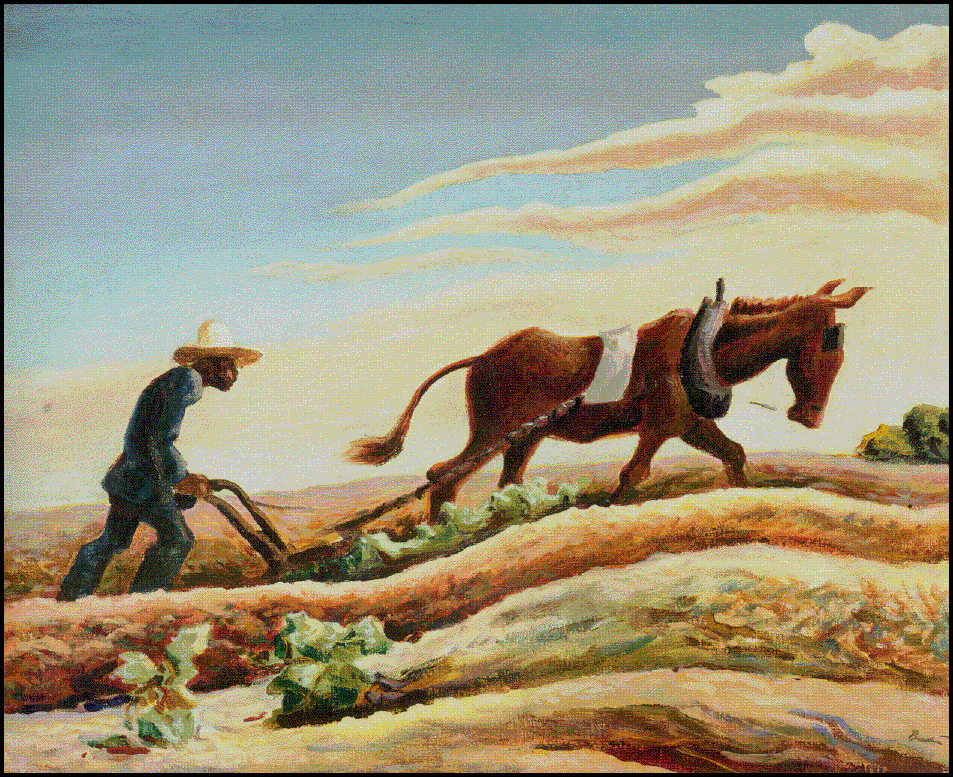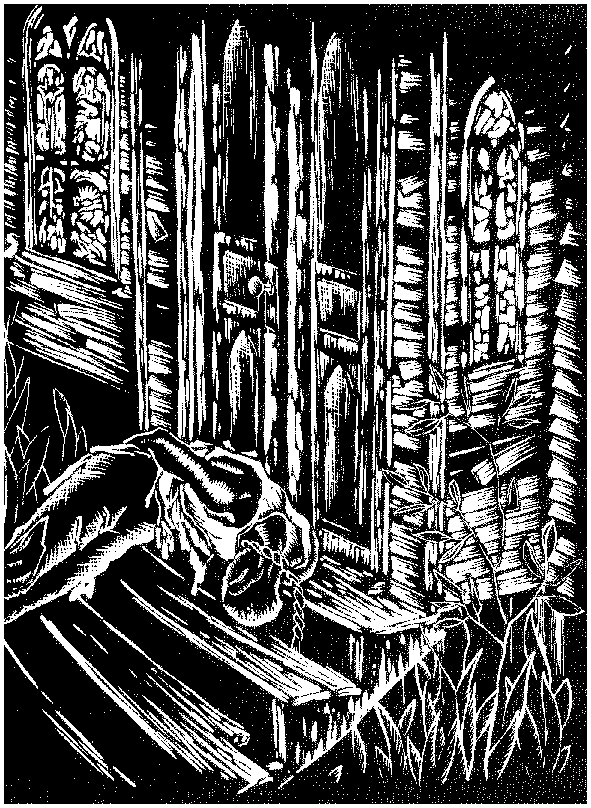
Landscapes
Of Slavery
The Plantation in
American Art
Angela D. Mack
Stephen G. Hoffius
Editors
(University of South Carolina)

Romantic, misty pictures of Georgian mansions with Ionic (and iconic) columns. Smiling blacks dancing, playing the banjo. Uncle Tom and Little Eva. Slave quarters at Mulbury House. Ruins of the plantation at Windsor ... a photograph by Eudora Welty, of which she wrote:A place that ever was lived in is like a fire that never goes out. It flares up, it smolders for a time, it is fanned or smothered by circumstance, but its being is intact, forever fluttering within it, the result of some original ignition. Sometimes it gives out glory, sometimes its little light must be sought out to be seen, small and tender as a candle flame, but as certain.
There are seven essays here and a hundred drawings, paintings, lithographs, photographs, and illustrations. Next to a photograph of the arching long-leaf pine at the Boone Hall Plantation there's a Gullah story about slaves who could fly,
Then they rize off the ground and flew back to Africa. Nobody ever saw em no more. My grandmother see that with her own eyes. Anytime they wanted they would fly back to Africa, then come back again to the Plantation. They'd come back cause they have chillun who didn't have the power to fly and had to stay on the plantation.
§ § § It's an interesting mix. The drawings and paintings from the 1800s are bucolic, sanguine, misty, sometimes washed out, always languorous. The ones from the last century begin to show the bitter truths of plantation life. The ones from ten or twenty years ago are haunted ... and haunting.
For this writer, there is a sweet irony here, pointing up the irony of many of our lives ... at least for those of us who grew up in the post-depression south. When I was at Benedict College in South Carolina, it would be unthinkable that the University Press at Columbia would have undertaken such a freighted topic as slavery and the plantation. Strom Thurman, the august Democratic South Carolina senator of that period would not have tolerated such a catalogue of horrors. What a change in the last half-century!
Now, of the 1,500 titles listed by the University of South Carolina Press, I could find no mention of a single volume by or about Ol' Strom, the man who once proclaimed, "All the laws of Washington and all the bayonets of the Army cannot force the Negro into our homes, our eating places, our schools, our churches, our swimming pools and our lives." The only clue we have that the old rascal was born, lived, and presumably died in South Carolina is "The Strom Thurmond Fitness and Wellness Center" which, considering he lived a full ninety-nine years, may have been his sole accomplishment.
§ § § Art historian Maurie D. Mcinnis tells us that the earliest efforts to save Mount Vernon were often thwarted by the fact that the Father of our Country had been a slave-holder: "Because of its association with him, Mount Vernon was certainly the most famous plantation in America; in the nineteenth century it was also a battlefield."
Alexis L. Boylan, also an art historian, says that our contemporary vision of southern life and culture came from the movies: "All attempts to re-imagine or redefine the South and plantations were forever altered by the phenomenon that was Margaret Mitchell's Gone with the Wind." And historian Michael D. Harris in his "Blind Memory and Old Resentments" tells us that the 46,000 plantations that once stretched across the south cannot hide "the reality of American life ... that the plantation was, and remains, an open sore."

This book is not without its moments, but there is no sense of unity here. Perhaps its greatest virtue comes from the contrast of the paintings and drawings of the ante-bellum period compared to those of the last century, such as Thomas Hart Benton's "Ploughing It Under" from 1934 [Fig. 1] and Hale Woodruff's brutal linocut from 1935 [Fig. 2].--- R. W. Lindemann